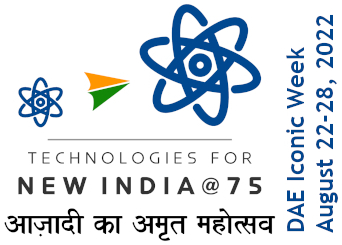HBNI declared J B Joshi Endowment Innovation Award-2023
Dr. Kathakali Sarkar is awarded with J B Joshi Endowment Innovation Award-2023 by Homi Bhabha National Institute, Department of Atomic Energy for her PhD research work in cellular computer technology and synthetic biology. Dr. Sarkar has completed her PhD under the guidance of Prof. Sangram Bagh.
A brief description of the innovation
The work reports the first ever Artificial Neural Networks (ANN) using genetically engineered living cells as hardware. ANN has been implemented primarily through software. It’s hardware implementation has also been carried out through material-based neuromorphic chips, photonics, spintronics, and in vitro DNA computation. Till now, on the other hand, ANN has never been physically realized at the cellular level. This study has adapted the basic concept of single layer ANN architecture and engineered E.coli cells in such a way that extracellular chemical inputs along with weights and bias get linearly combined into summation like function which further gets processed through a nonlinear type activation function and gives output through the expression of fluorescent proteins. Thus, each engineered cell act as an artificial neuro-synapses, which was named as bactoneurons. When various such bactoneurons are cultured together they worked similar to a single layers ANN type architecture and give rise to the appropriate computing function. Following this approach, Kathakali has developed bactoneuron-based single layer ANN performing complex computations such as a 2-to-4 decoder and a 4-to-2 priority encoder. To create such ANN with engineered bacteria, the team has developed a complete set of robust rules including how to map a functional truth table into ANN architecture with appropriate equations, how those nodes with mathematical equation should implemented in bacteria through molecular-genetic engineering.
Another work describes the invention of a distributed biocomputer using engineered bacteria, which solves 2X2 maze problems. Maze generating and solving are challenging problems in mathematics and computing. Generally, maze generation and solving require separate algorithms. In this work a cellular computing device has been built, which can couple maze problems and solutions. Kathakali mapped all the input-output matrices of a 2×2 mathematical maze into the form of a 4-input-4-output truth table. The logic values of four chemical inputs determined the 16 different 2×2 maze problems within a defined chemical space. The biocomputer was created by six multi-input synthetic genetic AND gates, distributed among six cell populations and organized in a single layer. Those cell populations in a mixed culture worked as a computational solver, which solved the chemically generated maze problems by expressing or not expressing four different fluorescent proteins. The three available “solutions” were visualized by glowing bacteria, and in case of the 13 “no solution” cases, no bacteria glowed. Thus, our system not only solves the maze problems but also shows the number of solvable and unsolvable problems.
Likely Impact of innovation
In micron scale there is no microprocessor-based computer or robot available due to energy, cost and technological constraints. This invention is about developing new computer technology using living cells as hardware. Performing cellular computations with engineered bacteria has enormous importance in biocomputer technology development at the micron scale. This indigenous work put us several step ahead to create such micron-scale computing using living cells.




